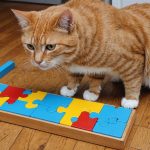Understanding the Behavioral Traits of Ferrets and Birds
Ferret behavior plays a crucial role when introducing them to new environments or other animals. Ferrets are naturally curious creatures, often displaying a strong desire to explore their surroundings. This enthusiasm is paired with a playful nature, which can sometimes come off as aggressive if not closely monitored. Understanding this behavior is essential to facilitate successful interactions with other animals, including birds.
Bird behavior also has unique traits that are important to consider. Birds, especially smaller species, can be skittish and easily stressed by fast movements or loud noises. Therefore, creating a calm environment is vital for their well-being. Birds often communicate through chirps and body language, which, if misunderstood, can lead to unnecessary tension during introductions.
Also read : Essential strategies for raising a happy goldendoodle puppy in the urban environment of scotland
Natural instincts play a significant part in animal interactions. Ferrets are natural hunters, and this instinct can sometimes lead to them viewing birds as prey. Conversely, birds have an inherent flight response, propelling them to seek safety when threatened. Understanding these instincts allows pet owners to anticipate potential conflicts and create a harmonious living environment by gradually introducing the two species under controlled circumstances. By doing so, both animals can experience a stress-free coexistence, enhancing their overall well-being.
Preparing for the Introduction
Creating a safe environment is crucial for a successful pet introduction. Begin by designating a neutral space that neither animal considers their territory. This eliminates possessiveness and reduces possible tension. Ensure the environment is calm and distraction-free, allowing the animals to focus on each other. Limit noise, and if possible, choose a well-aired area with plenty of natural light.
Also read : Essential Nutrients for a Healthy Pregnancy in Your Cavalier King Charles Spaniel
Preparation strategies should include making arrangements for a gradual introduction. Start by letting the animals get used to each other’s scents before they meet face-to-face. Swapping blankets or toys can be effective here. This helps them to acclimatize, fostering a sense of familiarity and easing anxiety.
Have essential supplies and equipment on hand. A sturdy pet gate can create a controlled environment for initial encounters. Leashes are also important, ensuring you maintain control over the situation. Additionally, keep treats ready to reinforce positive behaviour.
Remember, establishing boundaries is key. This involves guiding the animals on how to interact, gradually allowing them more freedom as they grow comfortable with one another. Reinforcing positive interactions and maintaining a calm, composed demeanour yourself will set the stage for a successful, stress-free introduction.
Gradual Introduction Techniques
When introducing two entities, be it pets or individuals, a slow integration approach can significantly aid in reducing stress and fostering positive relationships. Gradual introduction techniques serve as a fundamental pillar in ensuring a smooth transition.
First Steps in Introduction
The initial phase often involves initial separation coupled with methods like scent familiarization. Allowing each party to become accustomed to the other’s scent, perhaps by exchanging items, creates a foundation of familiarity. Scheduled visits for short durations further assess responses and help identify any areas of improvement needed.
Using Visual Barriers
One effective method during this period is using visual barriers. These barriers allow for sight contact without any physical interaction, offering a safe environment for observation. During these controlled encounters, it’s crucial to observe initial reactions and adjust the approach as necessary, ensuring a positive and calming experience for all involved.
Increasing Interaction Time
Once a level of comfort is established, you can begin increasing interaction time gradually. Follow guidelines that slowly build up the duration they spend together, and remain vigilant in recognizing positive signs. Adjust the approach to interactions based on these observations, ensuring a stress reduction-oriented environment conducive to building trust and connection.
Monitoring Interactions
It’s crucial to engage in interaction monitoring between animals, especially when introducing a ferret to a bird. To ensure their safety, watch for stress signals in both animals. For ferrets, look for pacing, hissing, or a bushy tail, which may indicate discomfort or displeasure. Birds may display signs of stress through feather ruffling, crouching, or emitting squawks. Recognize these behaviors for a thorough behavioral assessment.
While observing, it’s important to recognize any aggression. Ferrets might lung toward the bird, while birds may peck or flap their wings vigorously. If such actions occur, intervention is essential to prevent harm.
When intervening, it’s best to maintain calmness and use a soft, soothing voice to reassure both the ferret and the bird. Avoid abrupt movements which might exacerbate their anxiety. A helpful tip is to gradually separate the animals using a barrier or distraction, easing tension without escalating the situation. For continuous safety, increased familiarity with monitoring signs and assessed behaviours can avert potential hazards. Additionally, maintaining a safe environment with supervised interactions encourages positive outcomes between ferrets and birds.
Expert Advice and Personal Anecdotes
Introducing a ferret to a bird can be a challenging endeavour, but with insights from expert opinions and personal stories, it can be navigated successfully. Veterinarians and animal behaviourists stress the importance of gradual introductions and constant supervision. One key professional insight is to initially allow your ferret and bird to become accustomed to each other’s presence through a cage. This controlled environment enables them to visualise each other without immediate contact, diminishing anxiety and curiosity.
Personal stories shed light on the patience required during this process. For instance, Sarah, a pet owner, shared her experience of introducing her ferret to her parrot. Through incremental exposure, both animals adjusted to their new companion over several weeks. Sarah emphasised the importance of rewarding calm behaviour with treats, aligning with expert guidance.
Notably, owners often make the mistake of rushing introductions or neglecting supervision, which can lead to stress or aggression. Experiences with introductions reveal that awareness and gradual acclimation are crucial. The stories of other pet owners frequently highlight these common mistakes, underscoring the need for caution and vigilance when bringing ferrets and birds together. Such experiences help inform those embarking on similar journeys.
Troubleshooting Common Issues
Navigating the introduction process can be tricky, but understanding how to address problem-solving strategies can make it smoother.
Dealing with Aggression
Aggression can surface during initial meetings, posing challenges in fostering peaceful environments. It’s crucial to have safety protocols in place. If an animal becomes aggressive, immediately separate them to prevent harm. Introduce them again with barriers such as gates or crates to create a safe space while observing their behaviour. Utilize calming strategies such as synthetic pheromones or calming voices to ease tension.
Reassessing Progress
It’s vital to be aware of when to adjust or pause the introduction process. Pay attention to any signs of stress or repeated aggressive incidents, as these may indicate a need to revisit earlier problem-solving steps. Patience is key; adapting your approach as needed will contribute to success.
Long-term Compatibility
Develop ongoing strategies to support a harmonious relationship between pets. Regularly hold monitored interactions to reinforce positive behaviours. Investing time in continued education through workshops or consulting with behavioural experts can be immensely beneficial. These resources offer valuable insights and support throughout this journey, ensuring lasting harmony.











